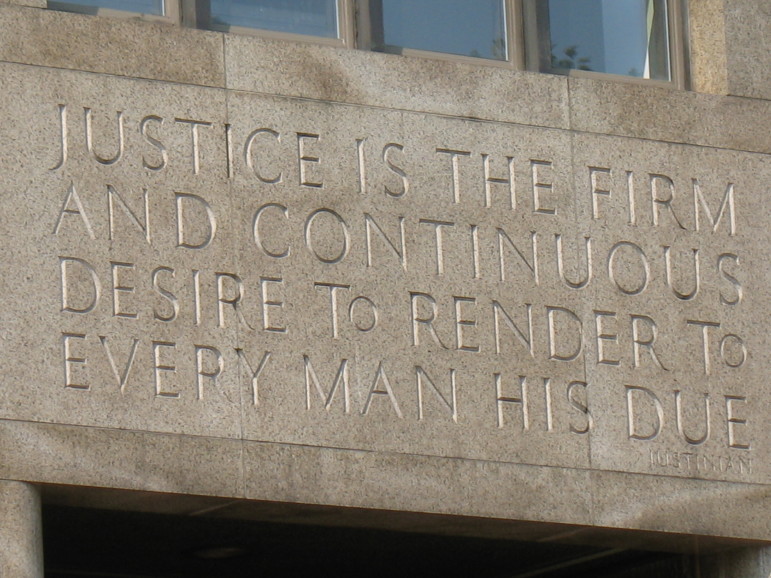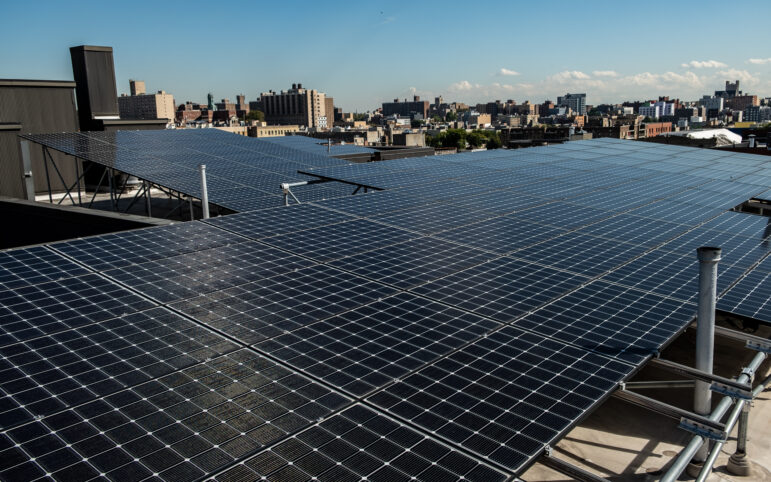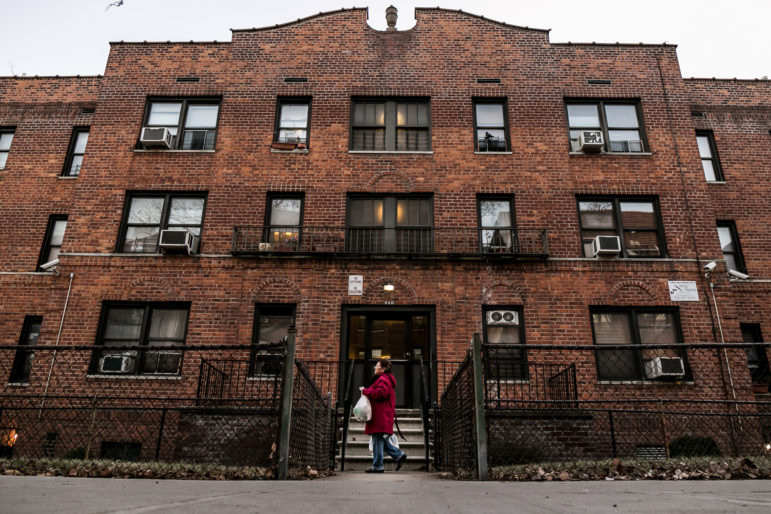
William Alatriste/City Council
At the first of the two City Council oversight hearings on Amazon. The third planned one will not occur.
Well, that was weird.
Less than three months after it was announced, Amazon has ended its plan to locate one of its two new headquarters in Long Island City—a deal had triggered fierce if entirely predictable opposition for throwing billions in public subsidies at the world’s richest man; bypassing public review processes; securing few promises for low-income job seekers; and rewarding a company with a lousy labor record, a creepy role in Big Data and some objectionable dealings with federal law-enforcement agencies.
“After much thought and deliberation, we’ve decided not to move forward with our plans to build a headquarters for Amazon in Long Island City, Queens. For Amazon, the commitment to build a new headquarters requires positive, collaborative relationships with state and local elected officials who will be supportive over the long-term,” Amazon said in a statement first published by The New York Times. “While polls show that 70 percent of New Yorkers support our plans and investment, a number of state and local politicians have made it clear that they oppose our presence and will not work with us to build the type of relationships that are required to go forward with the project we and many others envisioned in Long Island City.”
The plan was for Amazon to locate 25,000 employees in Queens and pay them an average of $150,000 a year. In return, the city and state would provide more than $3 billion in subsidies, mostly through automatic job-creation incentives; $500 million would come from state discretionary grants. The state’s involvement meant Amazon could bypass the city’s typical process for reviewing the disposal of public land, a seven-month mechanism called “ULURP,” in favor of an easier path called a General Project Plan. Gov. Andrew Cuomo said economic analyses showed the deal generating $27 billion in tax revenue over 10 years.
A deal unravels
The tide against the deal began to shift two weeks ago after a disastrous City Council hearing. During the hearing, Amazon representatives declared that the company would not stay neutral if Queens workers tried to unionize—and attached embarrassing fanfare to an announcement that the company would hire 30 people from a public-housing complex near the proposed HQ2 site. The 30 hires—out of a total of 700 hires Amazon planned to make this year—represented a fraction of the 7,000 people who live at Queensbridge. “Thirty jobs, are you f—ing kidding me?” said Councilman Jimmy Van Bramer, according to City & State.
Shortly after the hearing, the State Senate named a top critic, Queens Democrat Mike Gianaris, to a state panel, the Public Authorities Control Board (PACB), that might have been able to block the deal. Cuomo, who had defended the decision to bypass ULURP by promising that the PACB would scrutinize the deal, responded by suggesting that he might skip even that minimal review, given how inconvenient it might prove.
Get the best of City Limits news in your inbox.
Select any of our free weekly newsletters and stay informed on the latest policy-focused, independent news.
Then, last week, a rumor circulated that Amazon was considering pulling out—a clear shot across opponents’ bow. When opponents didn’t go weak at the knees, Amazon apparently started packing up its plans (though it still has 5,000 workers in the city and says it plans to keep growing here).
Supporters of the deal were quick to blame opponents for assassinating a chance to bring in good paying jobs that would fund progressive policies and cement New York’s place as the East Coast anchor of the tech industry. “Nice going anti-capitalists,” chided Nicole Malliotakis, a Republican Assemblymember from Staten Island. “Those elected officials who fought Amazon tooth and nail without flexibility just lost more than 25,000 good paying jobs for their constituents and the people of New York City.”
Cuomo echoed those charges, saying, “a small group politicians put their own narrow political interests above their community—which poll after poll showed overwhelmingly supported bringing Amazon to Long Island City—the state’s economic future and the best interests of the people of this state.” He added: “The New York State Senate has done tremendous damage. They should be held accountable for this lost economic opportunity.”
Opponents of the deal gloried in the win. “Make no mistake: strong, effective community organizing is what defeated Amazon’s $3 billion backroom deal,” said Jonathan Westin, Executive Director of New York Communities for Change.
“The Amazon deal was a mess: $3 billion in subsidies for a trillion dollar company, pushed through by two men who think community engagement is a joke,” said Melissa Mark-Viverito, a former Council speaker now running for public advocate. “This is why you bring local residents and stakeholders to the table before claiming victory.”
There is no question that Amazon encountered real anger, and that the effort to oppose the deal was well-organized and aggressive. By New York City standards, however, the reaction to Amazon was not singularly fierce. This is a city where a three-foot-wide bike lane can trigger years of acrimony.
Without taking anything away from the opposition, the fact that the company pulled out after encountering an easily anticipated level of resistance could indicate either that it wasn’t all that into us in the first place, or that it just wasn’t cut out for life in a city where it wasn’t always going to get its way. A clearly piqued Bill de Blasio, who lost some progressive cred over his role in the deal and now has no HQ2 to show for it, said as much in his statement on the withdrawal: “You have to be tough to make it in New York City. We gave Amazon the opportunity to be a good neighbor and do business in the greatest city in the world,” he said. “Instead of working with the community, Amazon threw away that opportunity.”
Now what?
“This is a huge win for New Yorkers and should mark a turning point in New York’s approach to economic development,” said the New Economy Project’s Andrew Morrison. “Instead of top-down decision-making and massive giveaways to destructive corporations like Amazon, our city and state should invest in economic development led by and for people and communities of color, immigrants, and women—who are disproportionately harmed by our current unfair, extractive economy.”
Indeed, it’s time to look ahead. Whether you blame or credit the opponents for killing the deal, or chalk it up to inscrutable decision-making by the company, and whether you are pleased or peeved that the deal is dead, the question is what happens now.
Amazon•What Everybody is Saying About the Amazon Pullout
•HQ2? HQ Boo! The Amazon Deal and NYC’s Progressive Identityn
•What Happened When Seattle Tried to Tax Amazon
•NY’s Leaders Pledged to Support ‘Innovation’ to Get Amazon Here. What Exactly Does That Mean?
•On the Air: ‘Innovation’ and Amazon’s Agenda in New York State
There are four things worth thinking about once the joy or the anger over today’s news fades.
1. The Amazon deal was a bad one but the city does need to keep diversifying its economy away from Wall Street. Tech is already playing a role in that and likely will continue to do so. That’s not a bad thing, of course, but it means that some of the concerns that dogged Amazon—about its labor practices, its position on data privacy laws, its trafficking in sketchy technology—could apply to other tech companies employing thousands of New Yorkers. If those firms locate or expand here without public subsidies, the equation will be different: New York won’t be bending over backward to bring in a problematic firm, but don’t think that issues like labor rights for tech workers disappear just because Jeff Bezos is going to put his helipad elsewhere.
2. As noted above, the subsidies Amazon was to enjoy were largely “as of right,” meaning they’d have qualified for them whether or not de Blasio and Cuomo signed on. It’s unlikely a deal as big as this one is going to come around anytime soon, so the dollar figures on future incentive packages are not going to be as large as they were for HQ2, but if the principle of giving tax breaks to employers is offensive, then those as-of-right programs have to be reformed. If the state’s tax environment is truly an impediment to business growth—and the huge gains for the downstate economy in recent years suggest otherwise—then we need to change the system, not tinker with it deal by deal.
3. The problems with public review are not unique to the Amazon deal. Environmental reviews cost big bucks and rarely seem comprehensive to skeptics. Moreover, ULURP offers no decisive power to communities or borough presidents. The state approach that was going to apply here, the General Project Plan, is obviously problematic too, given that it seemed to be up to the governor to decide whether a state board did or didn’t have a right to weigh in. Figuring out a better way to intelligently review development projects—balancing local, community voices with citywide and statewide needs—is as much a necessity now as it was when Amazon was headed our way.
4. Finally, the big worry about the Amazon jobs—that they would largely benefit new New Yorkers, who’d come in and price current residents out of their neighborhoods—to some degree reflected shortcomings in the way the city prepares kids for the workplace and grownups for new careers. This is not a new problem; it’s one that a lot of smart people and groups, like the New York City Employment and Training Coalition, have been thinking and advocating around for years.
Opportunities are going to arrive in the city. There are huge swaths of the population with the drive and talent, but not yet the technical skill, to take advantage of them. With the Amazon deal off the table, now is the time to create a truly robust system for getting people like the residents of Queensbridge Houses onto a track to get those kinds of jobs. Maybe even more than 30 of them, next time.









